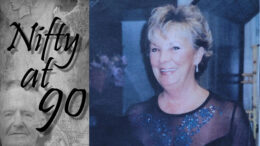The real test of Kris Letang’s relentless stamina doesn’t come in the Pittsburgh Penguins dressing room after a long game. When he logs the kind of ice time that looks like a typo on the stat sheet, the big challenge comes the next morning, when his young son Alex hops into bed ready for dad to get up and play.
Try explaining to a 3-year-old that, sorry, but daddy played 35 minutes against the Sabres. So Letang doesn’t even bother
“That doesn’t cut it,” Letang says with a laugh.
Besides, the truth is Letang’s not really that tired. Really. If he’s being honest, this is kind of where he always expected to be: playing the best hockey of his career (not to mention the most) for a team that heads into the postseason with its swagger and confidence restored thanks in large part to the smooth skating defenseman that plays with the engine of a Ferrari while getting the mileage of a Tesla.
Barely two years removed from a stroke that threatened to blunt the arc of his blossoming career, Letang is one of several ironmen whose tireless legs serve as part of the building blocks on which Stanley Cup dreams are made. The 28-year-old Letang averaged 26:57 minutes of ice time, fourth in the league and nearly 7 minutes more than teammate Sidney Crosby, the biggest gap between first and second on any club in the NHL.
Ryan Suter in Minnesota, Drew Doughty in Los Angeles, Roman Josi and Shea Weber in Nashville and Brent Burns in San Jose also finished in the top 10 in minutes, pillars at the blue line who have grown accustomed to carrying the heaviest burden. It’s the same up front for Crosby, Patrick Kane in Chicago and Washington’s Alexander Ovechkin. The offensive powerhouses all average more than 20 minutes a night in a sport that plays as a marathon disguised in a series of sprints.
While their respective coaches monitor their workload, they don’t get too caught up in watching the clock.
“Those guys who skate that way, that have those types of engines don’t wear down, it’s not an issue,” San Jose coach Peter DeBoer said. “And I think (Burns) actually thrives on it.”
It’s much the same for Letang, whose health scares over the years (including a series of concussions) left him wondering at times if he would ever reach the apex of his immense potential. It finally happened over the last four months, his breathtaking quickness combined with coach Mike Sullivan’s arrival in mid-December propelling Letang into the league’s elite.
“I mean, it was a way for me to step up and show what I’m capable of,” said Letang, who finished with 16 goals and 51 assists in 71 games. “The coaching change was a big way to improve myself and prove what kind of player I’m capable of being.”
Unlike some of the more defensive-minded players around Letang on the time-on-ice rankings, the Penguins defender does more than hover near the blue line on offense, directing traffic and throwing the occasional puck at net. Letang plays a full 200 feet, emboldened by Sullivan to use his creativity to take responsible chances.
“A lot of D-men that play big minutes play an efficient game,” Penguins defenseman Ben Lovejoy said. “They’re out there not playing a difficult style of hockey. They’re being efficient. Kris Letang’s game is not efficient. He’s out there skating up and down the ice as fast as he possibly can.”
It’s that speed that gives Letang a bit more leeway than his brethren. He can afford to take risks because his No. 58 jersey instantly becomes a blur when forced to race back toward the Pittsburgh net.
“He’s kind of a freak, athletically,” said Rangers forward Tanner Glass, who played with Letang in Pittsburgh from 2012-14. “And you pair that with he’s kind of got a bit of a fire to him. So that helps him defensively. I think he’s got that bite. He’s really proud. He doesn’t want to be scored on. He drives the team in a lot of ways.”
Ditto Keith in Chicago, who is more concerned with hearing Blackhawks coach Joel Quenneville bark his name over and over during the course of the game than the minutes it adds up to at the end of the night.
“If you tell yourself you’re tired, you’re probably going to play tired with less energy, so it comes down to the mental aspect of it,” Keith said.
And not all shifts are created equal. While Letang admits he will peek at the box score occasionally, going for 35 minutes during an overtime game where the Penguins spend plenty of time quarterbacking the power play against one team can be less draining than 25 minutes of regulation time against another.
There are ways to save energy, particularly on the power play. Washington coach Barry Trotz has no problem double-shifting Ovechkin when the Capitals have the man advantage, knowing the league’s top goal scorer can set up in the left circle and wait for the puck to come to him for a one-timer — the NHL’s answer to Stephen Curry letting fly from the top of the key. Trotz is more concerned about how much Ovechkin plays at even strength.
Given the very real chance of games extending well beyond regulation over the next two months, coaches will emphasize the “optional” in optional skates for weary legs. There’s also the army of nutritionists and athletic trainers whose job is to keep the best going.
Not that Letang or the rest of the NHL’s workaholics are concerned about getting worn out. If there’s one thing worse than playing too much, it’s playing too little.
“I mean the more you play, the more you’re into the game and you want to make a difference,” he said. “It’s kind of like that. I want to be part of the play and be whoever scores that big goal and make that big play. I want to be that guy.”








































